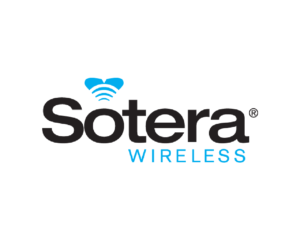Regularly evaluating the clinical condition of a patient is crucial in order to detect signs of regression early on. With the exception of guarded hospital wards, it turns out to be a challenge to complete measurements of all admitted patients adequately and in a structured manner, at regular intervals. In order to do this, the RadboudUMC uses ViSi Mobile (VM), a continuous monitoring system. Instead of measuring several times a day, a small locker on the patient’s wrist continuously registers five vital functions. An algorithm continuously calculates whether the situation is safe, or whether a nurse needs to be alerted. The regression of a patient is is brought to attention faster this way, and more preventive and predictive action can be taken.
Initiators prof. dr. Harry van Goor and dr. Bas Bredie recognised the problem of nurses having to manually collect patients’ vital functions parameter data multiple times a day. The patient’s parameters are recorded in the EHR, which still requires a lot of manual labour, and thus a Modified Early Warning Score (MEWS) is calculated. Measuring these vital functions is often a snapshot in time. Because of this, a clinical regression between two measuring points often goes unnoticed. This can lead to unplanned admission at the IC, with all the negative consequences that entails. “We wanted this to be different, and automating the measuring and documenting of vital parameters seemed like the right solution,” says van Goor. The continuous monitoring system of American manufacturer Sotera had recently received FDA approval, and set itself apart from other monitoring systems because the device could autonomously monitor five vital parameters at the same time. Also, no extra links were necessary to additional systems. “Within the RadboudUMC we were already aware of the digital care innovation necessary in healthcare. We saw a lot of potential in ViSi Mobile,” states Bredie.
The first two years revolved around the execution of usability and feasibility pilots[1]. Much attention was also paid to creating support for using VM amongst nurses. This resulted in, amongst other things, an education programme and e-learnings. After the pilots were successfully concluded, the system was implemented for 60 beds in two wards at the RadboudUMC, in order to establish the added value in practice[2,3]. Both patients and healthcare professionals were enthused. After one year, unplanned IC admissions decreased by one third across the two wards, solely by introducing the continuous monitoring. During the COVID-19 pandemic, the implementation of VM was accelerated, and by now 100 beds are being continuously monitored.
Van Goor and Bredie name several aspects that were important to them in the gradual and successful implementation of VM. “Firstly, healthcare professionals always came first during the implementation trajectory. Scientific validation and VM pilots created an important foundation for our implementation process. Besides that, we deliberately also included the learnings of US hospitals. Think, for example, of a list of necessarily involved internal and external stakeholders. After all, the implementation of continuous monitoring technology also requires adjustments in terms of logistics, staffing, team composition, and protocols. We also recognise the necessary ambassadorship of, for example, department heads. In close collaboration with the Radboud REshape centre, and later the RadboudUMC’s iLab, the implementation process was carefully devised with, and supervised by, specialists. This has ultimately resulted in clear protocols and a business case for the possible scale-up of VM to other departments. Finally, we received a lot of support from the Raad van Bestuur during the entire trajectory.” In part because of a lease agreement with the manufacturer, scaling up will be simple. After reaching this agreement, Van Goor and Bredie were supported by the departments Valorisation and Procurement. On the one hand because of differences in laws and regulations between the US and the EU, on the other hand because of existing cultural differences.
In the coming years, the goal will be to further scale up the continuous monitoring system within the RadboudUMC, and to integrate it in the 150 new patient rooms that are to be built. However, the goal was never the monitoring in itself, but aspects such as freeing up time for nurses, increased patient security, and the ability to better predict a regression in patients. To that end, much work is being put into developing a predictive model. A move is also being made towards lean monitoring, which involves monitoring only data which is actually relevant. The final objective is to swiftly provide insight into which patient or client needs which kind of care, using one hub which collects all data. “After all, in the whole of network healthcare, continuous monitoring isn’t limited to the inside of the hospital,” says Bredie. “And it’s good to have the public and private sector cooperate on this,” Van Goor adds.
References
- Weenk M. et al. Continuous Monitoring of Vital Signs Using Wearable Devices on the General Ward: Pilot Study. JMIR Mhealth Uhealth. 2017;5(7):e91.
- Weenk M. et al. Continuous Monitoring of Vital Signs in the General Ward Using Wearable Devices: Randomized Controlled Trial. J Med Internet Res. 2020;22(6):e15471
- Weenk M. et al. Wireless and Continuous Monitoring of Vital Signs in Patients at the General Ward. Resuscitation. 2019;136:47–53

